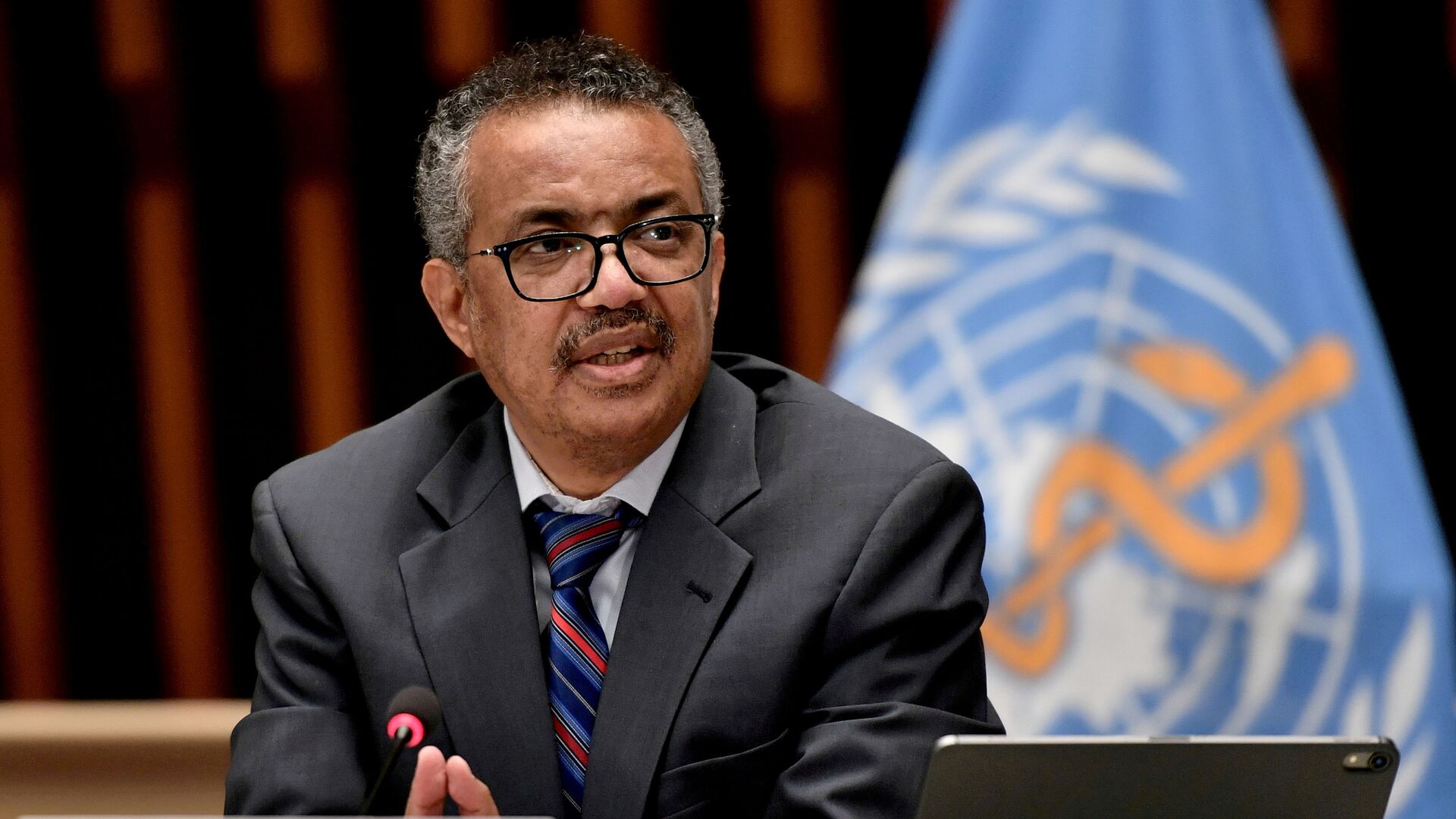‘Low Vaccination Rates’ Created ‘Perfect Conditions for Emergence’ of Omicron, WHO Chief Says
00:39 GMT 07.01.2022 (Updated: 11:36 GMT 23.11.2022)
Subscribe
The head of the World Health Organization (WHO) blasted the world’s richest nations for refusing to share vaccines with the world’s poorest nations, allowing the COVID-19 pandemic to persist and new variants of the virus to emerge.
“To end the acute stage of the pandemic, the highly effective tools science has given us need to be shared fairly and quickly with all countries of the world,” WHO Director-General Tedros Adhanom Ghebreyesus told reporters on Thursday.
“Vaccine inequity and health inequity overall were the biggest failures of last year,” he said, calling on all nations to support an initiative to vaccinate 70% of people in every country by the middle of 2022.
Tedros has long criticized the world’s richest nations, where the pharmaceutical companies that created and own the recipes for nearly all SARS-CoV-2 vaccines are located, for keeping vast stockpiles of shots for their own citizens and charging high prices for buyers in poorer nations, creating huge disparities in the reception of vaccines.
“While some countries have had enough personal protective equipment, tests and vaccines to stockpile throughout this pandemic, many countries do not have enough to meet basic baseline needs or modest targets, which no rich country would have been satisfied with,” he said.
“Alpha, Beta, Delta, Gamma and Omicron reflect that in part because of low vaccination rates, we’ve created the perfect conditions for the emergence of virus variants,” the WHO chief noted. “Booster after booster in a small number of countries will not end a pandemic while billions remain completely unprotected.”
Indeed, just days before South Africa detected the first cases of a new variant later revealed to be Omicron, Tedros warned that it was “a biological certainty that at some point, another virus will emerge that we simply can’t contain.”
Each time the virus enters a new host, it is given a new chance to subtly change its genetic makeup, producing a slightly different form of the virus. The vast majority of changes are benign, but some can grant the virus a qualitative advantage it didn’t have before, such as the ability to spread more quickly or to more effectively get around a person’s immune system defenses. It can even make the virus more deadly, although pathogens generally become less lethal over time.
Tedros also criticized the increasingly common use of “mild” to describe the Omicron variant, which is far more infectious than other variants and can infect fully vaccinated people, but hospitalizes fewer people it infects.
“While Omicron does appear to be less severe compared to Delta, especially in those vaccinated, it does not mean it should be categorized as ‘mild,’” he said. “Just like previous variants, Omicron is hospitalizing people and it is killing people. In fact, the tsunami of cases is so huge and quick, that it is overwhelming health systems around the world. Hospitals are becoming overcrowded and understaffed, which further results in preventable deaths from not only COVID-19, but other diseases and injuries where patients cannot receive timely care.”
Last month, Nature reported that just 7% of Africa’s 1.2 billion people had been fully vaccinated, with significant disparity between the continent’s 53 nations - Morocco has vaccinated 62% of its population, while the Democratic Republic of the Congo has vaccinated less than 1% of its people.
By comparison, 70% of the United Kingdom is fully vaccinated and 62.4% of the United States is fully vaccinated. On top of that, many First World nations have been giving out third “booster” shots for several months, with 73 million given out in the US alone, and Israel now rolling out a second round of boosters.
“At the current pace of vaccine rollout, 109 countries would miss out on fully vaccinating 70% of their populations by the start of July 2022,” Tedros said on Thursday. “But we can and must turn it around.”
US-made vaccines like those by Moderna and Pfizer are expensive, and their makers have drawn condemnation for refusing to offer lower prices to poorer nations. Thanks to intellectual property laws, those nations are also prevented from making their own generic versions. As a result, most of Africa, Asia and Latin America have gotten their vaccines from Russia, China, and India.
At a China-Africa summit hosted by Senegal in November 2021, Beijing pledged 1 billion SARS-CoV-2 vaccines to Africa and it has signed several deals with South Africa, Morocco, Egypt and others to produce millions of vaccines for the continent, as well. China exported 2 billion vaccines in 2021, even while immunizing more than 80% of its own massive 1.4 billion-strong population.
The WHO isn’t alone in its warnings about the dangers of allowing the pandemic to continue: the International Monetary Fund (IMF), rarely a friend of the world’s poorer nations, said in October that even if richer nations fully immunize themselves, COVID-19’s persistence in other parts of the globe would continue to drag global economic recovery. Further, richer nations are projected to recover faster and sooner than poorer nations.


